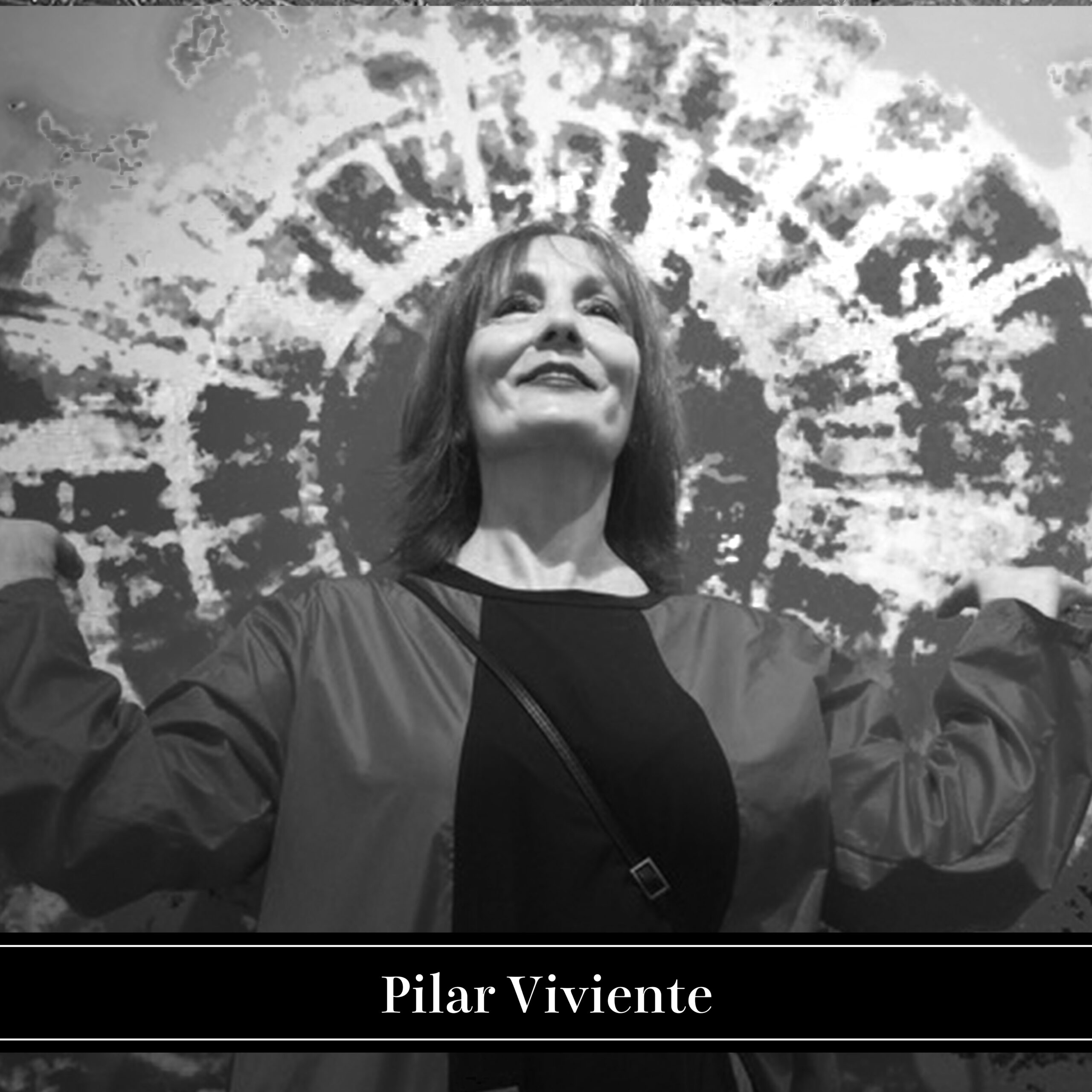🇪🇸 Spain

Pilar Viviente (María Pilar Viviente Solé, Madrid, 1958) is a multidisciplinary artist belonging to the so-called “Reflexive Generation” of the 90s. National Award for Excellence in Academic Performance (1987), 4-year PhD Fellowship (Spanish FPI, 1988-1992), and PhD by the UB (1993), she has been a professor in the Department of Art at the UMH since 1998, where she has directed several doctoral theses. With about 200 publications of her authorship, both national and international articles, she has published in media, art and culture magazines, academic journals, art catalogs and conference proceedings books.
Pilar Viviente has been trained in the Catalan school. Her artistic language assimilates elements of Pop Art, Conceptual, Abstraction and Informalism. She met some of the most prominent representatives in Barcelona at the beginning of her career, such as Arnau Puig, Antoni Tàpies, Josep Guinovart and Joan Hernández Pijuan. Among her first exhibitions just mention the 5th Catalan Contemporary Art Show, 1985/1987, curated by Josep Canals, “Nauxers d’Abrils”, Dau al Set Gallery, Barcelona, 1988, curated by Vicenç Altaió, and her solo exhibition in the Cycle “The Pictorial Experience” of the Government of Catalonia, Santa Mònica Art Center, Barcelona, 1990, curated by Luis Francisco Pérez.
From 1985 to date, she has held around 200 national and international exhibitions in galleries, museums and art spaces, participating in biennials and fairs, and interpreting her music in piano recitals. Youth Art Show Award 1988 from the Ministry of Culture and Museari Award 2022 for Artistic Career, her work is represented in important museums such as MACBA, as well as in prestigious public and private collections around the world, currently being for sale in art galleries in Spain and abroad such as: Maeght, París; Jorge Alcolea, Madrid; Klaus Kramer LTD, Alicante; Contempera, Amsterdam; Art Eterne, New Delhi; Cortabitarte, Soria; Subastas Durán, Madrid; Abartium, Barcelona; MADS, Milan; Vision Art Media, NY; Osman Mediterranean Center Foundation, Altea/Miami.
■ M.A.D.S. ART GALLERY | artist | PILAR VIVIENTE
■ The Blue Lotus Magazine. Asian Arts and Cultures e-magazine. Issue 55, Sept. 2022. P. 102-180.
PILAR VIVIENTE
1.
RedSun_2023
The pictorial process of this work is mixed (mixed media). The artist starts from a painting on metal (Arkaim, 2017) made with oil and lacquers, like the one that is part of the MACBA Contemporary Art Collection (Speculum sapientiae, 1989), on which she later works with the digital palette, generating the particular Series Rodetes of digital art, which leads to liberation through repetition, either visually or soundly (solo piano). It refers to cosmic consciousness and archaeological themes, mythical and universal patterns below the surface, and It is related to an artistic research into light and color.
For some time now, Viviente has been developing in her work the concept of “Rodete”, and to this series belongs the work for VIZIONNAIRE. A main source of inspiration is the headdress worn by Iberian women in pre-Roman times, an example of which is still preserved today in the National Archaeological Museum: The Lady of Elche. This stone bust is emblematic of the culture of the time, in which women wore this headdress with two large wheels at the ears. The wheel-shaped ornament on each side of the Iberian busts is called Rodete. We also find Paleolithic Rodetes similar to Chinese disks in the Altamira Museum, Spain. Viviente multimedia project Rodete is inspired by the shape and symbolism of this particular design. The artistic research revolves around the theme of the wheel in all its symbolic meanings, as well as its role in the historical process, from its invention to the present day. The wheel symbolizes the sky (rotation of heaven), eternity (eternal passage time) and the immovable and immutable principle from which movement and universal transformation start. In addition, the wheel is also a mandala. People in many cultures use mandalas to find spiritual or emotional wholeness and to help them look deep within to find peace, strength, and a sense of universal connectedness.
The entire series Rodete “consists of digitally realized works, which depict the wheel in different colors and sizes, arranged in color fields that fade into each other, describing the subject in a language reminiscent of screen printing” (Francesca Brunello, Visceral Catalog, MADS, Milan, 2022). The random stain, tachisme and the psychic powers of the stain, in dialogue with geometry and its symbolic attributes, are already present in her painting in 1985. The result is an image that came from an archaeological context (see religious) but has a deeply contemporary aesthetic from a feminist perspective. “The multimedia project Rodete of Pilar Viviente explores the forgotten balance between history and gender”, as Eva Klaehn points out (HOME[less] Catalog, New Art Salon Foundation, Garmisch-Partenkirchen, 2022).

